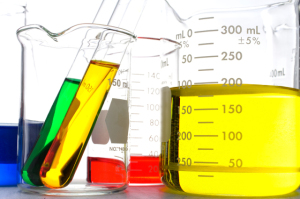by
Brendon Nafziger, DOTmed News Associate Editor | February 18, 2010

Some good news
on isotope production
The fragile global supply for medical isotopes crucial to nuclear medicine was strengthened Wednesday, as a Polish research reactor is set to become the first reactor to enter the isotope-making business this century.
Covidien, the Loughlinstown, Ireland-based makers of nuclear medicine imaging agents, reached a deal with the Institute of Atomic Energy in Poland (IAE POLATOM) to use its Maria Reactor to create molybdenum-99, the precursor to technetium-99, widely used in SPECT imaging.
"This is an historic agreement. It is the first time in decades that a new reactor has been brought into the global supply chain for medical isotopes," Timothy R. Wright, president of Covidien's pharmaceutical division, said in a statement. "We are excited that we will now be working together to provide more than a million patients around the globe with access to a critical medical isotope during this serious shortage."



Ad Statistics
Times Displayed: 316
Times Visited: 2 Keep biomedical devices ready to go, so care teams can be ready to care for patients. GE HealthCare’s ReadySee™ helps overcome frustrations due to lack of network and device visibility, manual troubleshooting, and downtime.
The timing, for Covidien, couldn't be sweeter, as the announcement came two days before the High Flux Reactor in Petten, Netherlands, which accounts for more than half of Covidien's isotope supply, goes down for six months of repairs.
Maria, named after Marie Curie and located about 30 km southeast of Warsaw in Swierk, Poland, should be producing the technetium-99m for European consumption within 30 days, according to Covidien. Pending Food and Drug Administration approval, U.S. use should follow closely.
"We have applications in with the FDA and Health Canada to supply the U.S. and Canada," Bruce Farmer, a spokesman for Covidien, tells DOTmed News. "We're optimistic that would be in the next month or two, but obviously that's out of our control."
Covidien believes Maria will ease the effects of the Petten reactor's February 19 hibernation by supplying almost one million patients with nuclear medicine doses over the next six months. It could also help plug a gap in supplies many industry watchers feared would form between the time HF goes under this week and before repairs finish on the National Research Universal Reactor (NRU), the aging Canadian reactor that accounted for almost half the world's supply, and which is set to come online in April.
"Prior to our Maria announcement, there was a five-day period near the end of March where there would be absolutely no supply at all," Farmer says. "This Maria situation will help alleviate that."
Once up and making isotopes, Maria, built in the 1970s but fully overhauled in 1995, will join the elite ranks of the five other global medical isotope-producing reactors. Besides the Petten and NRU reactors, they are the BR2 in Belgium, the Osiris reactor in France and the Safari reactor in South Africa.
Nonetheless, the industry isn't out of the woods yet. In an email sent after the announcement Wednesday morning, Leerink Swan analysts Rick Wise and Miroslava Minkova argue that while it's a great development, it's not a final answer to the supply worries. Maria, which is smaller than the Petten reactor and comparatively more expensive to run, will only supply around 10-20 percent of Covidien's needs, far less than the 50 plus percent the Dutch reactor had been meeting, according to the analysts.
"Imaging is likely to remain a volatile business, albeit now perhaps slightly more consistent than in recent years," they write.

